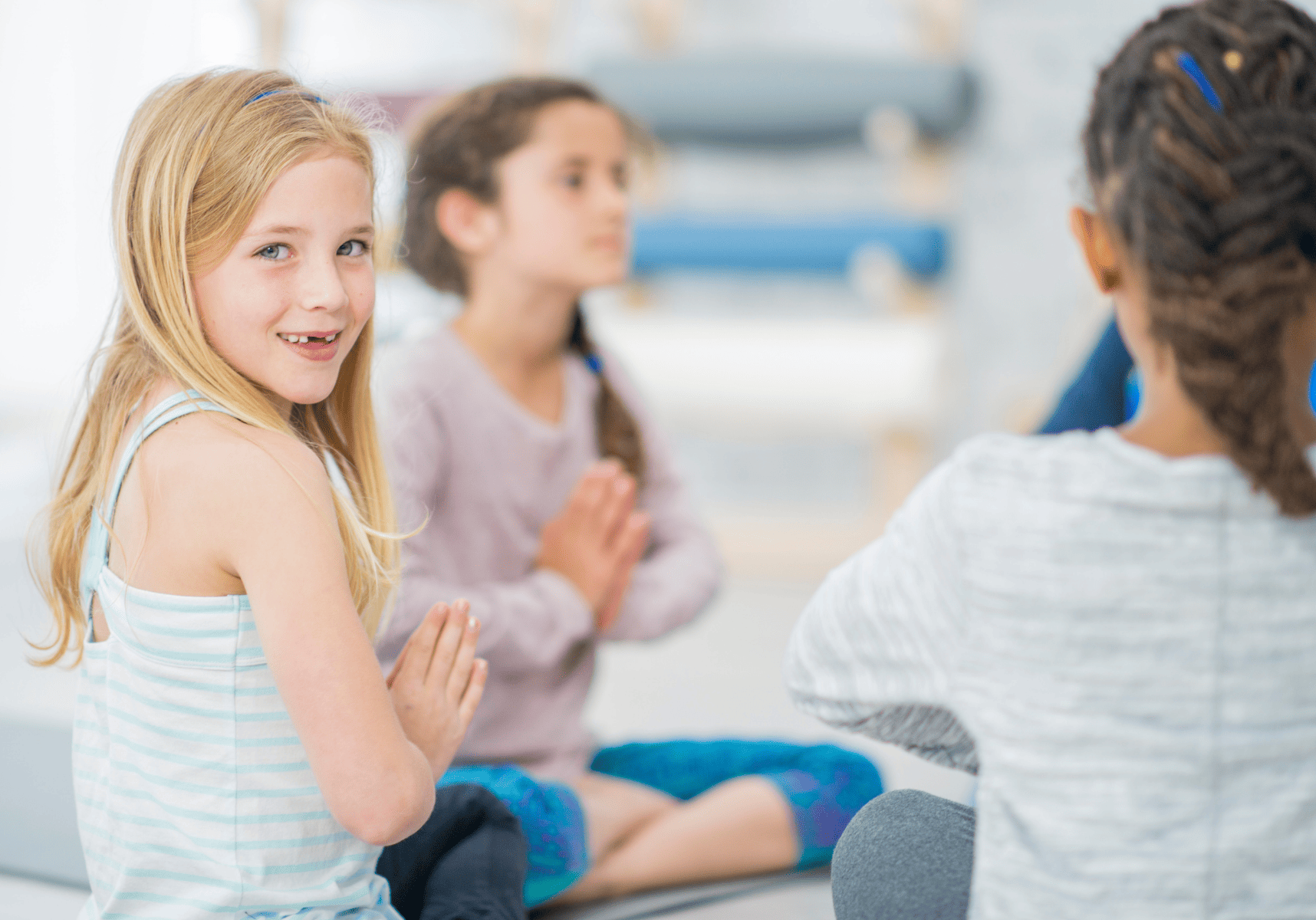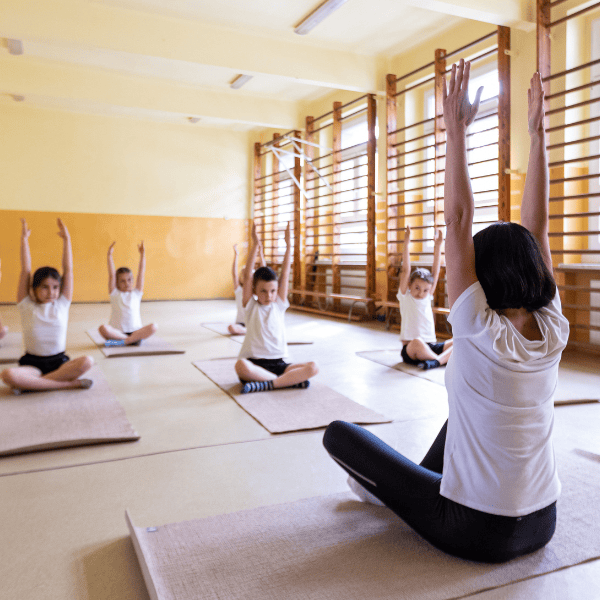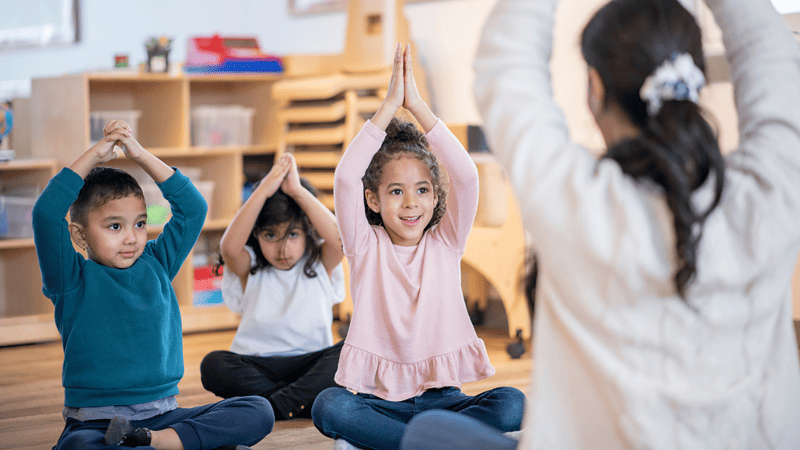
Should Yoga be Taught in schools?
Yoga in Schools: A Breath of Fresh Air for Mental Well-being and Prevention - By Hayley Graves
Reading time: 5 minutes
The number of children and young people across the UK experiencing mental health difficulties is rapidly increasing. This results in mental health services being unable to meet the rising needs, leaving many young people with little or no support.
The most recent key strategy from the government includes more provision of mental health and wellbeing support in schools and the community outside the NHS, including a focus on prevention (1,2). A recent evaluation of this strategy found that while progress has been made, the increase of support in schools has focused on those with more serious issues, resulting in those with mild to moderate issues still receiving no support and the focus not being preventative (3)
So what is prevention?
According to the Cambridge dictionary: prevention is the act of stopping something from happening or of stopping someone from doing something.
Could yoga be a way to prevent mental health issues? And target those with mild to moderate mental health difficulties?
Yoga
Yoga is a multifaceted ancient practice. The purpose of yoga is to promote well-being through the integration of mind and body with an emphasis on self-realization (4).
The very meaning of yoga is to achieve a balance within the internal and external environment through the practice of ‘pranayama’ breathing exercises and ‘asanas’ postures.
By practicing yoga, it can help individuals to reach a state of mental calmness, so that they are better able to respond to difficult life events. It can enable them to feel in control and respond in a more balanced way.
Mental health
Mental health does not discriminate. Tragedy does not discriminate.
Unfortunately, anyone can be affected by grief, trauma and the chances are everyone will face some challenges throughout their life. So how do we prepare children for this?
Research on the efficacy of yoga for improving mental, emotional, physical, and behavioural health is a growing field.Research evidences how yoga can improve executive functions and academic performance. It teaches self compassion and kindness, improving friendships and connections. Yoga can help improve the symptoms of anxiety and depression for over 70% of young people (5). Yoga is also accessible to all, those with physical disabilities are able to participate through adaptations of the poses. Those with additional needs, neurodiversity, again, can all participate through modifications.
Yoga promotes physical health, strong bodies and movement. It is an inclusive evidenced based practice that improves both mental and physical health, yet we don’t teach children?.
Why teach yoga?
Children aren’t taught how to breathe. During exam periods when their stress levels are through the roof, when they’re asked to read out loud in class and panic so much they cannot see the words in the book, when a child calls them a name in the playground and they automatically react, when they’re at home faced with arguments… these are typical experiences young people face in every day to day life yet we teach them nothing to help them cope. Unless they reach a point where it begins impacting upon their education and they start acting out or struggling emotionally.
Breathing techniques, are an important part of a developing yoga practice. In life, in the presence of danger, the breath becomes fast and short as your body tries to load itself with oxygen and protect itself (Fight and Flight Response). This response happens when our brain reads the situation and feels it needs to protect us, we panic, become stressed and overwhelmed. However, it can misread the situation and become activated when we are not under any threat.
Breathing techniques can enable you to take control of your body’s response. By doing so, we activate our Parasympathetic Nervous System which slows down our heart rate and allows us to think logically and rationally. So in those situations where our hearts beating so fast we can hear it pounding, we can become aware of this and understand how to slow down the breath so we can regain control. Increasing our ability to walk away from the child in the playground, focus on the words in the book, concentrate in exams and hear those arguments but remain calm and not allow our thoughts to escalate.
Yoga can be a prevention, it promotes wellbeing and is accessible to all. Enabling all young people to experience yoga could allow some to use this as a coping strategy throughout their lives. It has the potential to reduce mental health conditions among young people.
Teaching young people how to breathe when overwhelmed in any situation, how to be more aware of their bodies, how to sit with uncomfortable emotions, acknowledging them and how to regulation their emotions… this has to be a positive thing, right?
- Transforming Children and Young People’s Mental Health provision: green paper (2018)
- The NHS Long Term Plan; 2019
(https://www.longtermplan.nhs.uk/publication/nhs-long-term-plan/).
- Ellins, J., Hocking, L., Al-Haboubi, M., Newbould, J., Fenton, S. J., Daniel, K., ... & Mays, N. (2023). Early evaluation of the Children and Young People’s Mental Health Trailblazer programme: a rapid mixed-methods study.
- The Yoga sutras of Patanjali: The book of the spiritual man : an interpretation. 1975.
- .James-Palmer, A., Anderson, E. Z., Zucker, L., Kofman, Y., & Daneault, J. F. (2020). Yoga as an intervention for the reduction of symptoms of anxiety and depression in children and adolescents: a systematic review.Frontiers in pediatrics, 8, 78








